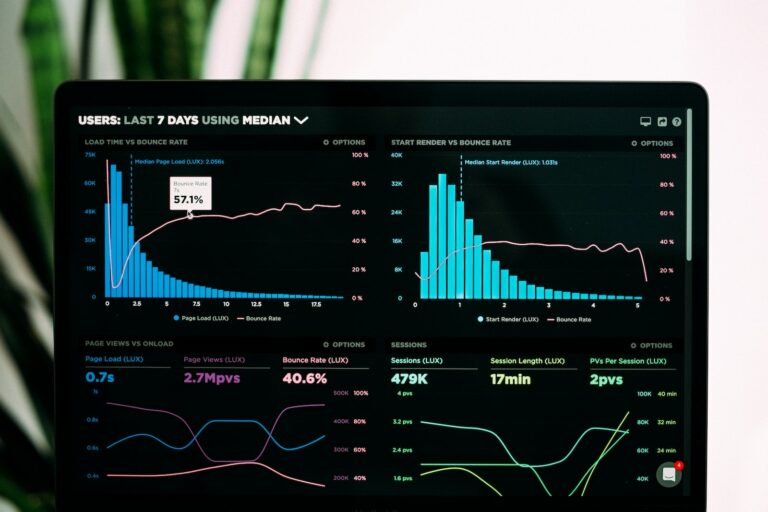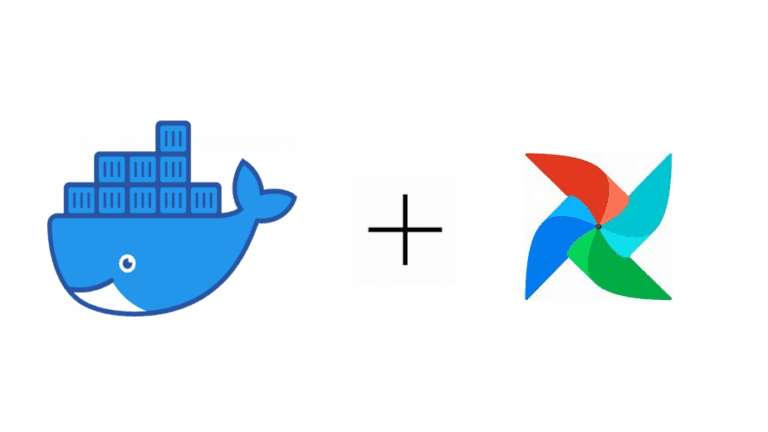How to Kickstart Your Risk and Data Analysis Career in 2024
Are you a data analyst, or are you looking to learn the skills necessary to stand out in the field of risk management? Look no further, in this blog, we have compiled a list of the hands-on technical skills you need to master for your ultimate goal. In this article we will also provide links to resources you can use to boost your analytics skills or acquire new ones especially for those looking to take enterprise risk management tangent.
There has never been a better time to pursue a career in the growing field of risk analytics, and the intersection between data and business analytics uniquely positions you to a wide range of career options/employment options on the data focused transformation the world is currently undergoing. It is my intent to flesh out this belief, with insights from personal experiences, conversations with practitioners in the fields of analytics and risk consulting and research into the current industry trends.
The Career opportunities in Risk and Data Analysis
First off, we will start by exploring the career paths available for one who specializes in risk analytics. Risk analysts use their skills to identify, assess, and manage risks in a variety of industries. The field of risk consulting is wide and with the new developments post pandemic, the list of career options has just gotten wider. Deloitte has listed Data analytics as the one of the 2021 Hot Topics for Internal Audit in Financial Services. Risk management is not only confined to Internal Controls and Insurance, but other domains also that are open to exploration include:
- Risk Analyst (General)
- Data and Information Risk Analyst
- Insurance Risk Analyst
- Business and Pricing Analyst
- Loss Control Analyst
- Financial Risk Analyst
- Risk Control Consultant
- Data Privacy risk consultant.
- Data and Fraud Analyst
- Government risk analyst
The list of related career paths is in no way exhaustive, if you have any that we may have inadvertently missed, drop the same in the comments section below.
What skills do you need?
1. Spreadsheets
As a faster way to ingest data and perform basic analytics, spreadsheet tools like Excel and Google still reign supreme when it comes to more mundane tasks like entering and organizing data into columns and rows, quickly visualizing organized data and making quick calculations to draw inferences as a precursor to advanced analysis. Keep in mind other non-data analytics tasks like documenting work performed and developing risk registers will often be done in Excel. You can kickstart your learning with Leila Gharani’s Excel basics course.
2. Data Privacy and Protection Basics
As a risk consultant, you are in the business of selling trust alongside your technical expertise, this is because in advising clients, you will from time to time get to handle sensitive information that may be rife for exploitation. A good number of businesses today have their data as a competitive differentiator and the implication is that a data breach can be catastrophic, thus you do not want to be the weak link in their data privacy and protection loop. You can learn more about the basics of data privacy and protection here.
Additionally, you may be working with international organizations, in which case, regulations regarding cross border data transfers and storage could be a consideration. Not to mention, the data privacy implications of some of the recommendations you will be presenting to management. All these will require you to have an understanding of data privacy and its implications. If anything, you will be a risk expert dealing with data, implying that the pre-existing knowledge of this will be assumed.
3. Statistics
The knowledge of statistical concepts is a must have for anyone looking to work with data. From descriptive statistics which are the quantitative measures that describe the properties of a sample derived from a population to inferential statistics which are the predictive measures one uses to infer characteristics of the population by just working on the sample. When performing your work as a risk consultant with a data analysis tangent, full population testing will be one of the main outcomes since this enables accurate quantification of risk. Oftentimes presenting to stakeholders with sample-based results imply they are not sure to what extent the issue identified in the business sector or department is pervasive and what level of mitigation measures need to be invested in enforcing tighter controls.
4. Data Visualization and data storytelling
Being able to tell compelling narratives that empowers your audience to take action and put resources aside for a certain recommendation is not only an added bonus, it is recommended in closing the data driven decision making loop. Here you will be expected to master what makes for a good data visualization, what chart types to use for each category of data presentation, and how to tailor your data stories to the audience’s needs. The key tips for making sure your presentation has an impact involves
- Knowing the context of your data, which comes with spending time with the data, investigating its source and obtaining an understanding of the key critical fields.
- Distributing pre-reads ahead of presentations and setting up pre-alignment meetings before the actual meeting to understand the audiences’ expectations.
As Donna M. Wong puts it in her book The Wall Street Journal Guide to Information Graphics, “We live in a data-driven world where the ability to create effective charts and graphs has become almost as indispensable as good writing”
You can check out this blog on choosing the right visualization type and the official Tableau training videos here.
5. Programming tools
Part of your day job will involve extracting data from API and unstructured sources as well as integrating your pipelines with databases before you can embark on your analysis. Additionally, you may encounter unstructured and large data that may require the use of functionalities beyond those of spreadsheet software. You may also want to automate repetitive work that consumes your time so that you can focus on other novel projects. This is where programming languages and tools like Python, R and SQL will come in handy. Check out our guide to learning Python blog for more.
6. Data Wrangling
Arguably the most important step in analyzing data is getting it into a format that can be used for further exploration. Here you will perform outlier detection and treatment which will call upon your statistics knowledge, data quality assessments, string manipulations using either Python or R, Parsing file formats eg csv and xml files, performing mathematical transformations, using regular expressions and handling missing data. This skill you can hone through regular practice with data available in Kaggle competitions.
7. Relational Databases and SQL
Most companies you will work for as clients, will have their data stored in databases. To extract the same, you will first need to understand the concepts of Relational Database Management Systems (RBMS) as these are the more ubiquitous types used to store structured data. The knowledge of SQL will help you optimize your queries, relate multiple databases and build or change those database structures altogether. You will also be able to understand and provide in-depth solutions to data quality problems which result from the data storage architecture in use, which will help the companies make the most use of their data.
8. Predictive modeling and machine learning
In as much as your day-to-day tasks may not involve working with complex algorithms, you need to know the application and interpretation of common machine learning models, from dimensionality reduction methods like PCA, to outlier treatment models like Isolation Forest to supervised and unsupervised techniques. You may need to know the base theory and implementation details behind these methods and when to and to not apply them. With predictive analysis you can deliver insights like:
- Based on the predictive model there could be a potential loss of inventory worth Ksh, 1,500 in the next quarter (model is within 90% confidence level)
- Adding a second layer of approval to payments greater than 40,000 could help reduce duplicate payments by 65% (model within 95% confidence level)
Predictive modeling and simulations will also enable you to test the effectiveness of any controls you recommend to mitigate against a risk and obtain assurance that sufficient reliance can be placed on their function and continued operation over time and seek alternatives.
Additional Skills to stand out.
- Project Management – depending on the size of the organization from time to time you will be required to lead a project and see it to successful completion, and this involves managing expectations, complex team relationships, client presentations and the timelines of every phase of the undertaking.
- Subject Matter Expertise – developing baseline understanding of assumptions and industry knowledge through continuously working on a specific sector can give one a leg up in delivering important insights that go beyond the superficial and answer the critical questions that other stakeholders might have. This you can hone through having a portfolio of projects related to your field of interest. From third party risk management, financial services risk management, enterprise resilience and BCP to data governance, the list of areas for specialization is plentiful.
- Excellent Communication skills – a critical step in completing the project lifecycle is communicating to your audience the key takeaways from your visualizations and insights.
- Experimental Designs – As a risk analyst you need to lay out tests in a way that produces dependable and reproducible results and thus the experimental design imperative. This involves choosing different aspects/factors that can affect the result and evaluating the significance of the outputs. Sometimes, this can involve simulation and A/B testing
Summary and next steps
For an accelerated success in pivoting to a data career, I usually suggest putting heavy emphasis on undertaking courses designed with a project-based curriculum which equip you with the skills you need and push you out of your comfort zone to learn outside the predefined content. This is the kind of learning environment you will encounter at Zindua School.
Having covered the basics and the different pathways that fit into risk and data analytics careers, it is recommended that you aim to credentialize your learning, a step which will be critical in projecting authority in your field and accelerating your career growth. Here are some of the relevant certifications for you to consider:
- Data Management Practitioner – DAMA International
- Data Protection and Privacy Certification
- IBM Data analyst professional certificate.
- Microsoft Certified: Data Analyst Associate
Coming soon
- Resume tips for data science roles
- The full guide to documenting your portfolio project
- A guide to a successful interview in tech







